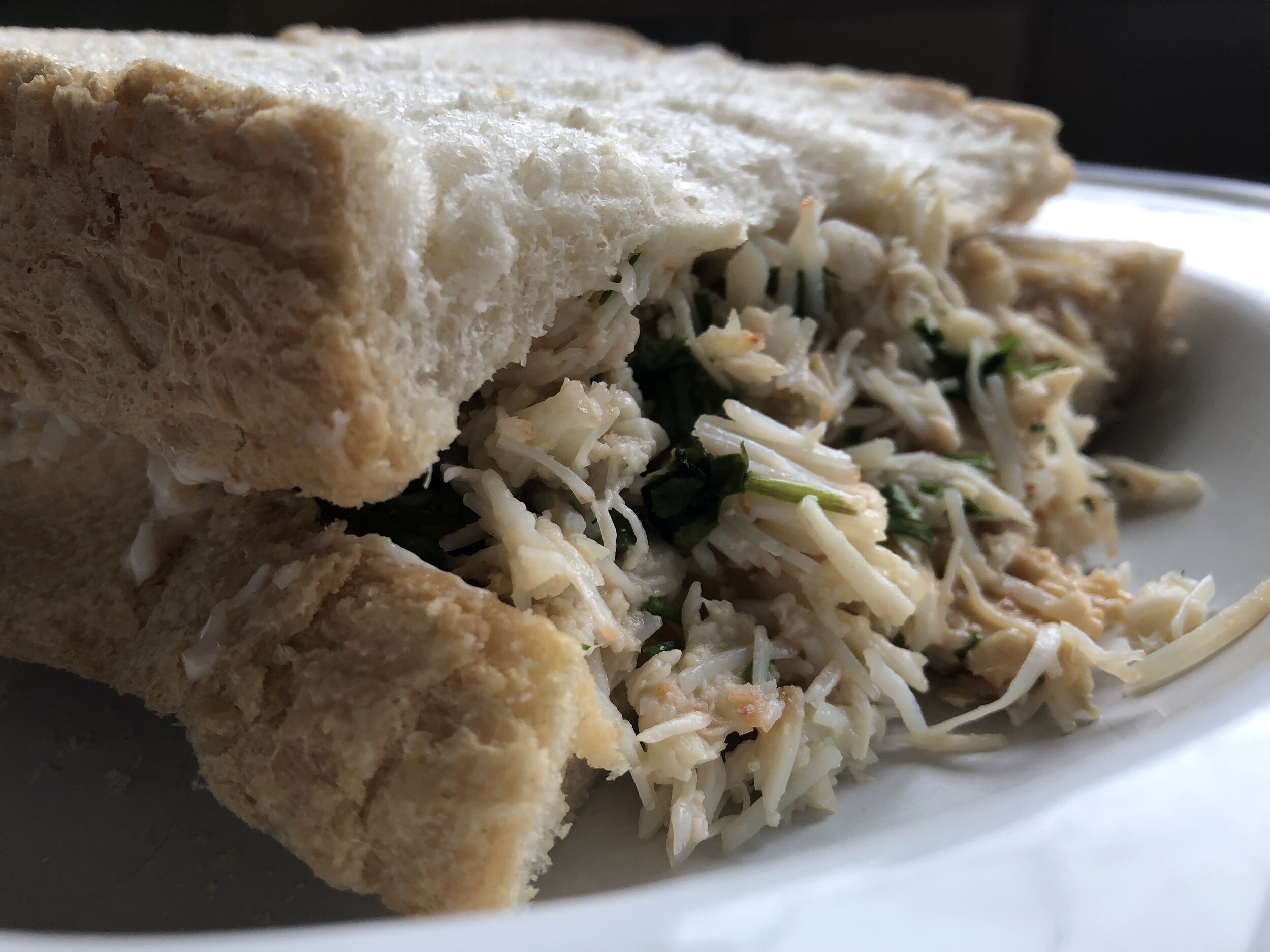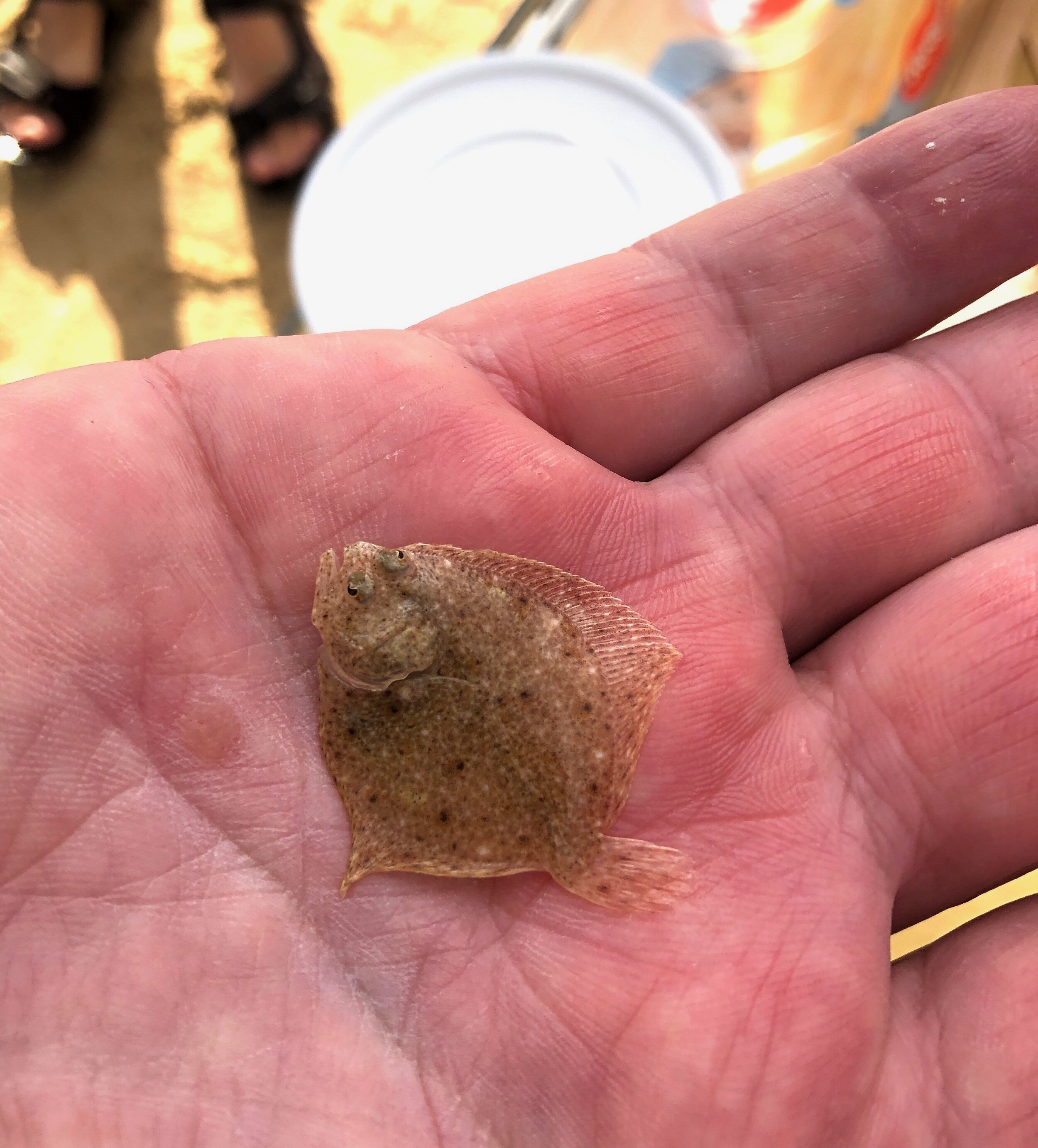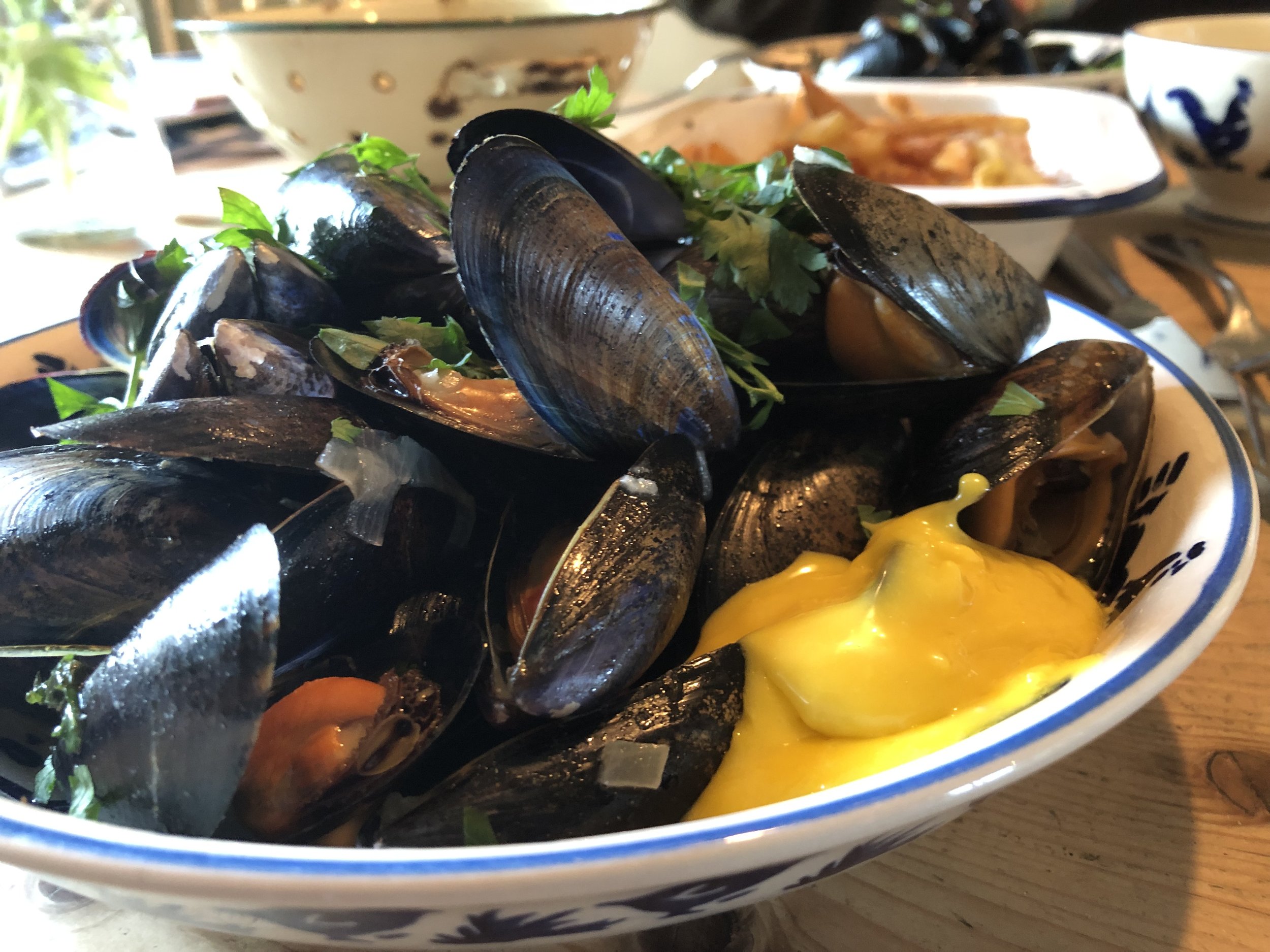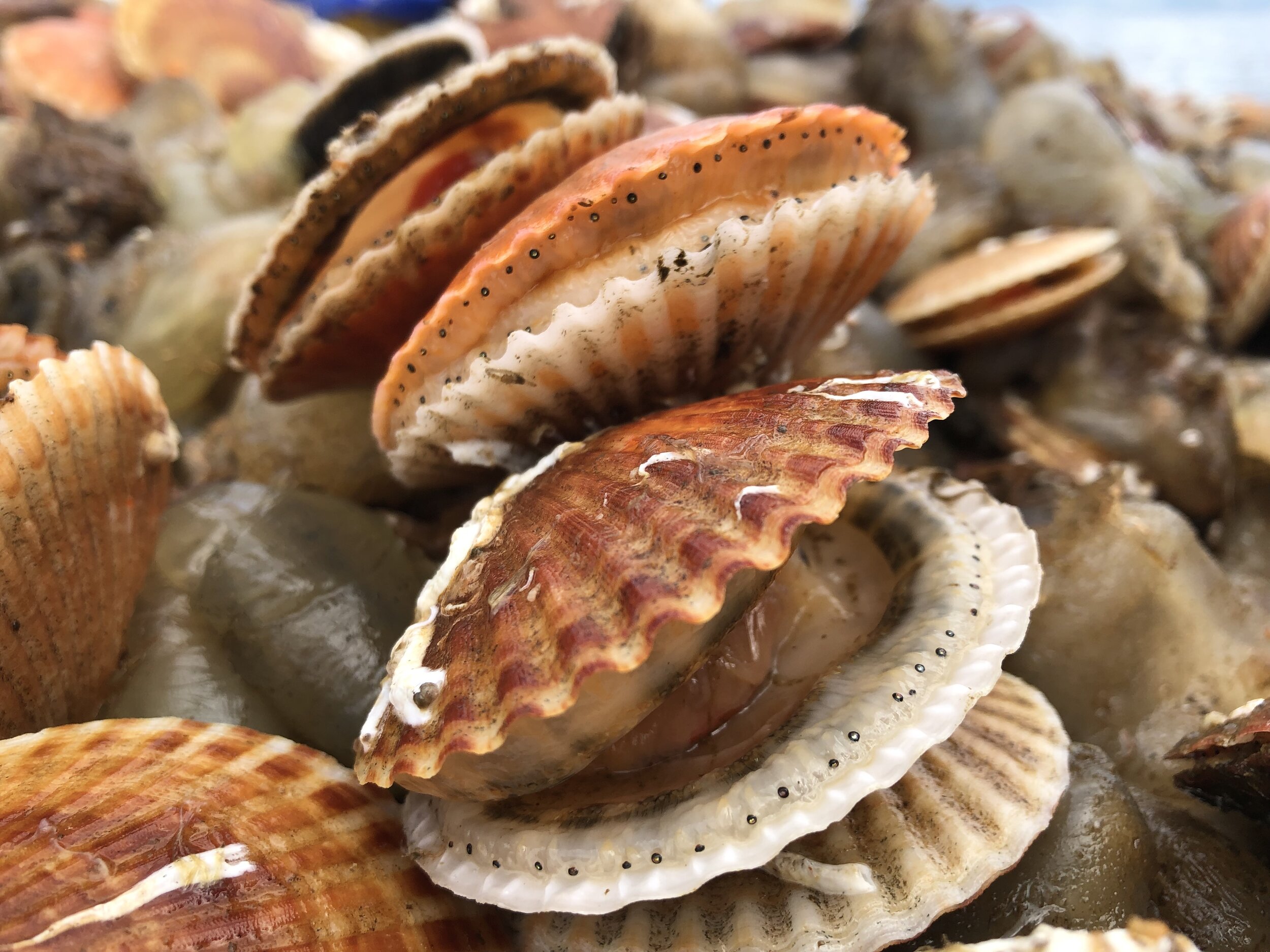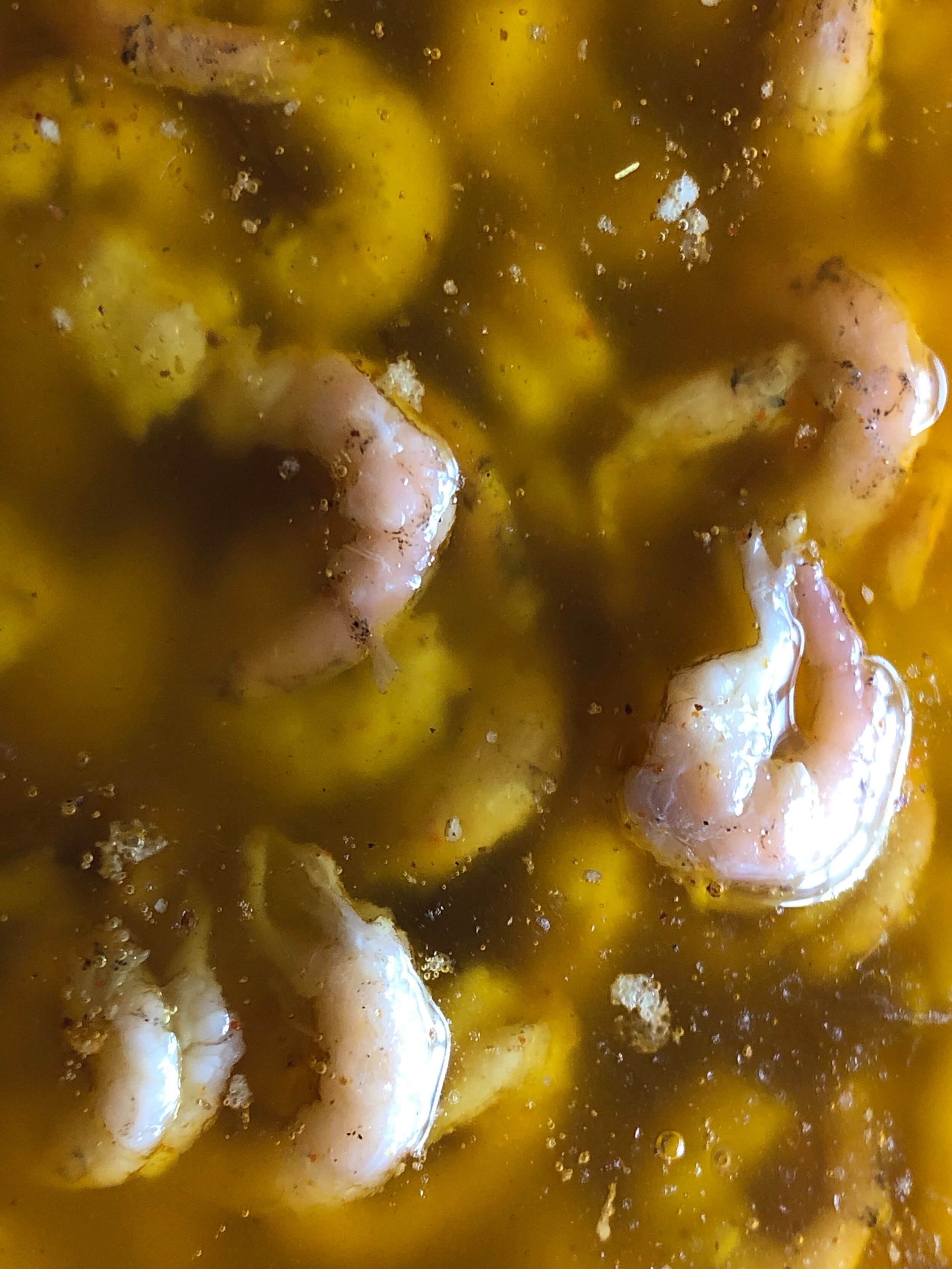Brown Crab, China and Jamie Oliver
It couldn’t have come at a better time really, because in the immortal but slightly erroneous words of the Apollo 13 mission. ‘Houston we have a problem’ - a big problem and it involves the story of one of our most abundant and traditional seafood species - the brown crab (Cancer pagurus).
Last week saw the Channel 4 re-run of Series 6 Jamie Oliver’s Jamie & Jimmy’s Friday Night Feast, where in episode 1 accompanied by his erstwhile partner in food heroics, Jimmy Doherty, Jamie sets out to discover why the UK consumer eats so little brown crab compared to other neighbouring nations who eat it by the lorry load.
It’s a very simple question to answer really, but a much harder one to address when as a country we consume so very little seafood anyway and even then 70% of what we do eat is imported. Yes, it’s still the ‘infamous five’ I’m afraid. Tuna, salmon, cod , haddock and the tedious, never ending, conveyor belt of farmed Asian prawns that adorn just about every supermarket cold shelf in the kingdom.
The paradox is (and I’ll say it once again), that we do have the best quality fish and shellfish in our waters of any country in the Northern Hemisphere and yet we export 80% of what we catch and farm. Brown crab, as Jamie Oliver found out during our seaside exploration on the South Coast, is mostly exported and more recently, mainly to China, in a colossal market worth approximately £50m/year.
Until now…..
Just before Christmas, Chinese government trade officials announced, quite glibly, that they would no longer be accepting shipments of live and processed brown crab from the UK until further notice and that’s before Coronavirus reared its ugly head. Now, I’m not going to delve into the political complexities surrounding this announcement, but what I can tell you is that we land around 30,000 tonnes of these wonderful crustaceans into UK ports every year, and relatively very little makes its way onto our tables. Half of that figure has been attributed to China, with other export markets such as France, Spain, Portugal etc accounting for most of the rest.
So notwithstanding the fact that Messrs Oliver & Doherty have been doing a sterling job reinvigourating our passion for the white and brown meat, there could soon be an awful lot of crab suddenly looking for a home, once the spring landings start from Bridlington to Brixham.
Now call me old fashioned, but when the fishermen have seen prices leap to around £4/kg on the quayside for their product in recent years, a drop to around £1.50/kg or less, seems realistic now and with massive investment in the crab catching sector on the back of the exports to China, a lot of fishermen are already mightily concerned about this year and the prospects for continued trade.
When I’m giving talks on seafood consumption and sustainability, I always say that any export market is never guaranteed and a fallback position is essential to protect incomes and livelihoods. That fallback position has to be the domestic market, but of course it’s incredibly difficult to be reactive, when you have a poor record on seafood consumption and a culture and retail sector that lacks understanding and passion for the product.
However, I’m eternally optimistic and a little knowledge does indeed go a long way. Jamie and Jimmy say it very well in their programme and people shouldn’t see it as just a jolly on the pier, but a message with integrity and reason. When we recorded the programme the Chinese crab market was in full swing, it’s now ebbed to a trickle and a full stop.
Have a look at the episode - you can find it here and at 20-26 minutes in on More4 (you might have to sign in). See what you think and I can guarantee that your mouth will be watering by the end……
The Ultimate Crab Sandwich
Everyone, yes everyone, should be made to try a good crab sandwich once in their life. My mother was obsessed with them and had a dream of retiring to Cornwall to sell them in a little kiosk on Looe harbour quay. I don’t honestly think she’d have made a lot of money, as such was her ardour for their flavour, she’d have just ended up making them for herself.
Ingredients (Serves 2)
250 g fresh picked white brown crab meat
100g fresh picked brown brown crab meat
2 tbsp of fresh, homemade mayonnaise
Several thick doorstep slices of fresh white bloomer loaf, or a split crusty baguette.
Cornish dairy butter
Half a lemon
Freshly ground black and white pepper.
Method
Mix the brown meat in with the mayonnaise, a squeeze of lemon and fold to a smooth consistency. Butter the bread liberally and apply the mayo/brown meat mix. Heap the flaked white meat on to the prepared slices, firm down a little and again squeeze a little lemon over. Dust with a little white pepper and grind over some black pepper too, to your taste.
Close the sandwiches off and firm again before slicing and serving. You could of course add fresh herbs parsley, coriander or chervil to the mix (the latter being particularly suited to crab), but actually there’s nothing like having it unadulterated. Enjoy with a cold beer. Beer and crab go phenomenally well together.
Shrimps and Sandwiches
Since my early childhood I’ve loved the experience of pushing a net through the shallows and rock pools of our coastline. In fact any sort of beach or intertidal foraging provides such great excitement and when productive, is incredibly rewarding. Brown shrimps are my favourite quarry and following one or two test forays with very willing and understanding friends and guinea pigs, this year we have established the ‘Shrimping Safari’ at beaches along the Suffolk Heritage Coast.
Now you can join me on my low tide forays, hunting for these delightful little sea-jewels, learning about the flora and fauna of our shallow seas and cooking and eating our catch only yards from the water’s edge. You will get wet, and you might get cold, (depending on the weather) but you will have an experience like no other and eat some of the most underrated and delicious shellfish that our waters yield.
Guidance, shrimping equipment and hearty encouragement are provided for everyone. All you need to bring is stout footwear, clothes you don’t mind getting wet or covered in sand and bags of enthusiasm. After our adventure (usually about an hour at dead low water, on the slack tide), we’ll cook our catch and peel and eat these wonderful little crustaceans and who knows, you might have found your new hobby.
Under our stunning Suffolk skies and with the rush of the surf around our feet, we patrol the shallows, armed with our trusty push nets (which you can also purchase to take home) and collect whatever we are able to sift from the sandbanks that appear at low water.
The brown shrimps of course are the main quarry, but other varied and equally fascinating sea-life often appears in the mix; depending on the time of year we can find juvenile flatfish - soles, plaice, flounders, dabs or occasionally a turbot or brill. Pipefish, sand gobies, sea gooseberries, shore crabs, juvenile brown crabs and other jellyfish are commonplace under the right conditions. Occasionally, we’ll happen onto a lesser weever, with, for the unwary, its unwelcome poisonous dorsal spine and accompanying painful sting.
Whatever we catch, (hopefully enough shrimps for a feed) we have a lot of fun. Fresh air, ozone, salt and seawater are a perfect blend for feeling absolutely alive and in tune with nature’s wild bounty. The trips last roughly 3 hrs from start to finish, culminating with Brunch or High Tea on the beach, depending on a morning or afternoon tide. We’ll then cook the shrimps in seawater and enjoy with homemade bread and butter and a mug of something reviving!
I’m currently sorting out dates for 2020 and will post them on the ‘Events’ page of this website. Booking is via Eventbrite, but of course you’re welcome to email or DM anytime to enquire or just to ask questions.
I do hope you’ll join me…
Mike
Moules Frites
It’s a classic isn’t it? Bars, tavernas, and trattoria across continental Europe, revelling in thousands upon thousands of tonnes of Mytilus edulis in their glossy, blue-black hues, with overdeveloped golden meats, luxuriating in parsley, garlic and white wine-laden broths, with fragrant, aromatic, tones billowing forth on plumes of swirling steam.
Couple with that a bowl of the crispest, finger-scorching frites , a generous dollop of homemade mayo and a frosted pint of super-chilled and sparkling continental lager and you have the makings of a very good time indeed.
But although we down them with gusto, en vacances, we’ve never really got the hang of cooking them (from live) at home. Admittedly, many, many British pubs and restaurants do fabulous things with them, but as a goto seafood staple - nah, not really. We’ve a long way to go in the moules stakes before we can compete on a level playing field with the likes of Les Belgiques.
But we should at least try. The 20,000 tonnes of product we churn out each year from our own waters, equates to the yearly throughput of your average Belgian or Dutch merchant, so we’ve a lot of catching up to do.
So here’s a very simple DIY moules recipe that takes literally seconds and is so unbelievably easy. It just needs the right fresh product and to follow these simple steps. I use many sorts of mussels, but I heartily recommend the Fowey Shellfish Co, organic blue Cornish mussels from St Austell Bay. These are rope-grown and come live but cleaned, graded and ready to cook in modified atmosphere trays (MAP) which gives them a 7 day shelf life from dispatch. They are effectively pot-ready and all you have to do is tip them in and wait a few minutes before enjoying shellfish heaven.
You cannot lose!
Moules Frites
Serves 2
Ingredients
1kg Fowey Shellfish Co organic mussels. (or 2 kgs if you’re a mussel maniac like me)
1 brown onion (chopped)
Four cloves garlic (crushed)
Small bunch chives (chopped)
100g salted butter
500 ml white wine (whatever’s there)
Ground black pepper
Sea Salt
Bunch of chopped fresh parsley (stalks and all)
1-2 tbsp creme fraiche
For the Frites
1kg Maris Piper potatoes (thinly chipped)
Sunflower oil for frying
Sea salt
Method
For the frites:
Parboil the chipped potatoes until just soft on the outside. Drain and wash in ice cold water. Drain again and dry on kitchen roll.
Heat enough oil in a heavy frying pan or wok, just so the fries will float and heat to 180C Gas 4. When up to temperature add the fries evenly and fry until the sugars in the potato start to caramelise and colour the fries a golden brown. Remove, drain and sprinkle with sea salt and keep warm.
For the moules:
Fowey mussels come ready to cook, as I explained, but it’s still worth just checking through for any damaged in transit. Take the live mussels and freshen up in a colander under running cold water. Pick out any that are broken or are fully open and don’t immediately close. Drain and put to one side.
In a heavy bottomed saucepan, melt the butter and a little oil and introduce the chopped onion and garlic. Soften over a low heat - don’t burn and when the butter starts to take on a nuttish colour and the onions are soft, up the heat till bubbling and add the half the white wine. Boil for a minute, so the alcohol cooks off and then tip chives, mussels and half the chopped parsley into the pan. Stir in all the ingredients and combine. Keep on the heat and cover.
Cook for two minutes and then lift the lid. The mussels should be fully opened, but just stir over to check. Lift the mussels out with a slotted spoon and keep on allow heat.
Put the cooking liquor onto a fierce heat and reduce by 1/4. Remove from the heat and stir in any remaining butter and the creme fraiche. Combine, add the rest of the parsley and pour over the mussels as served in warm bowls.
Serve with the homemade frites, or sautéed potatoes, crusty bread, croutons or whatever takes your fancy….. and of course some homemade mayo (see, sides)
Finally, pour the remaining white wine into a glass, sit down, scoff and enjoy!
Grilled Loch Fyne Queenies with Chervil Butter
Scallops for me are best served raw. Freshly shucked and pulsing, straight from from the briny with nothing added save a huge grin. However, I do appreciate that this practice is not within everyones’ remit and of course the next best thing is cooking them in a myriad of different ways, but always ensuring that under cooking is the essential norm. Less is more [sic]
Jamie McMillan runs Loch Fyne Sea Farms, operating out of the picturesque and timeless fishing village of Tarbert in Argyllshire. Having been fishing for langoustines all his life along the Scottish West coast, he has recently turned his attentions to sustainable aquaculture and invested in an operation that farms Queen scallops in the nutritionally rich and pristine waters of the loch.
Queen scallops generally inhibit the seabed in sandy and gravely areas. Trawled and dredged for in seasonally operated fisheries like the Isle of Man, they are a sensational although environmentally sensitive product that requires strict monitoring of the fishery. In Loch Fyne however, growing quickly and efficiently in their ‘Lantern nets’ suspended from a buoyed headrope, the ‘queenies’ are a naturally sourced product, which are ranched in about 40m of water.
Taking approximately 2 years to reach a mature size of about 40-60 pieces /kg, requires good husbandry and the growing scallops are constantly monitored graded and restocked to allow optimum growth rates. The resulting product is not only exquisite in flavour, texture and colour, but one hundred percent ethically produced with virtually a zero carbon footprint and completely organic. Now, that’s my kind of farming.
Grilled Queen Scallops with Chervil Butter
Serves 4 (as a starter)
Ingredients
32 Loch Fyne Queen scallops, cleaned and in the half shell
100g salted butter
1 lime cut into wedges.
Bunch of fresh garden chervil (chopped)
Method
Arrange the scallops on a foil-lined grill tray and bring the grill up to a high heat.
Soften the butter to room temperature, in a small bowl and mix in the chopped chervil. Brush a little soften butter onto each scallop, season with black pepper and place under the grill for approximately 2 mins.
Remove from the heat and give each one a squeeze of lime, before serving with a dressed salad garnish.
Homemade Potted Shrimps
Brown shrimps are yet another one of those locally-abundant seasonal shellfish that mostly get exported away from our shores. Apart from in the North West, where traditional shrimping and potting are still carried out in the likes of Southport and Morecambe and the product is laboriously but very efficiently hand peeled, the bulk of our national catch (about 5000 tonnes) go to Holland for mechanical peeling, using high pressure water and compressed air. This in itself is a very effective method but I think always loses the flavour. When the shrimps return to us vac-packed and pasteurised, they seem to have mysteriously quadrupled in price too, making them off the menu for most chefs.
I however, have the luxury of being able to catch my own at low tide with my trusty push net, or buying them straight off the boat from local Lowestoft skipper, Jeffery Melton. The tastiest are undoubtedly the ones I forage for myself, though all are good and the commercial shrimp boats cook their catch aboard in sea water in a gas-fired boiler.
Cooking them on the shore, on a portable stove having just netted them from their sandy burrows is immensely gratifying. The just-cooked sweet and saline, ozonous aroma is unforgettable. The shrimps, to be enjoyed at their best, should be peeled or eaten whole straight away, (don’t worry about the shells) They are literally so moreish, I have a real job not eating them all straight off like a bag of maltesers….
But a great and very traditional way of enjoying them is to incarcerate them in spiced butter - or potted and then liberally spread over some warm, sourdough toast. Quite an old fashioned tea time treat, and a little indulgent, but then so very easy to make and of course you can use North Atlantic prawns as an alternative, if you can’t find any brownies.
Homemade Potted Brown Shrimps
Serves 2
Ingredients
1 pint of cooked and peeled brown shrimps.
250g unsalted butter
A pinch of ground mace
A pinch of cayenne
A squeeze of lemon
2 small ramekins to serve in
Soughdough or wholemeal toast to serve on.
Method
Melt the butter over a low heat and strain off the solids so you’re just left with the clarified ghee. Introduce the mace and cayenne and stir over a low heat. Let the spices infuse into the butter. Add a squeeze of lemon, before taking the peeled shrimps and tamping them down into the ramekins with the back of a spoon.
Pour the spiced butter gently over the shrimps just to the top and allow to cool and set. Dust the solidifying mix with a little more cayenne and refrigerate. The potted shrimps will keep nicely at 2-4C for a few days or you can freeze.
To serve
Take the ramekins out of the fridge and leave to stand a while at room temperature to loosen the butter. Spoon the potted shrimps onto your freshly made warm toast and savour whilst thinking of the beach. Always does it for me.
Last of the Lobsters
The end of the summer for me means the drawing in of the evenings, a nip in the air and the final hauling of the lobster pots here on the East coast. Having normally started fishing around the end of March, we make the most of the season on lobsters through until September , after which the pots come ashore for maintenance and to evade the winter storms. Much of our gear here is fished close inshore and would be smashed up on the beach after too much hard weather.
So with the last of the lobsters I always like to finish as I started - a simply boiled fish that can be enjoyed and celebrated as a fitting end to a summer’s fishing. Dressed and served with a simple homemade mayo and either some hand cut chips or sautéed second crop new potatoes. It’s a flavour that has been with us over the summer and is now time to be replaced with the next locally seasonal seafood offering.
Poached Native Lobster with Lemon Mayonnaise
Serves 2
Ingredients
1 x 500-750 g live native lobster
2 free range egg yolks
1 tsp Dijon mustard
Freshly squeezed juice of half a lemon
Pinch sea salt
Table or sea salt for the poaching liquor.
Splash white wine vinegar.
Method
Boil 3 -4 litres salted water (or preferably clean seawater) in a large saucepan. Add a dash of white wine or cider vinegar and when you have a rolling boil prepare your live lobster.
Ideally you should keep the lobster at 0-2C for an hour before dispatching (I call it a pre-med), so that stress levels are kept to a minimum. The RSPCA home method is to dispatch by cutting down through the brain and central nervous system which kills the fish instantly. Splitting it lengthways is also effective,, but obviously not for poaching, only for baking or grilling/barbequeing.
Having dispatched the lobster, pop it into the saucepan and boil/poach for approximately 8-10 mins for that size of fish. I tend not to boil too fiercely and it is very easy to over cook, and toughen the flesh. After the requisite time remove the, now beautifully red, lobster and set aside to cool at room temperature, to let the meat ‘set’. When cool enough to handle it can be served or refrigerated.
Dressing
Cornish Scampi with Aioli
Langoustines, Dublin Bay prawns, Norway lobster, Nephrops norvegicus or just plain old ‘scampi’ these [mostly exported] delicacies hold a special place in my affections and have done since I first visited Scottish Skipper Jimmy Buchan in Peterhead nearly 6 years ago to learn more about the fishery there.
From the Fladen Ground of the North Sea to the Western Minches and right down to the banks of the Celtic Sea, these iconic crustaceans have traditionally captured the culinary imagination of most of of our European neighbours, but sadly not here in the UK unless their tails are adorned in breadcrumbs, fried and served in a basket.
Over the years I’ve cooked and had cooked for me, some exquisite and delicious lango recipes, all showcasing the product in ways that identify it as a small lobster, rather than a prawn and utilising that unique and sweet flavour to the max. I’ve eaten these shellfish all around the UK and having become something of a talisman for me, I’ve made it my mission to recruit UK consumers to the idea that these creatures are something we could enjoy more fully, especially as (and paradoxically), we’ll consume them ad infinitum when abroad on holiday.
I’ve creel-fished for them on the Isle of Harris, I’ve eaten them out of Loch Fyne and cooked with them aboard Jimmy’s trawler the ‘Amity’ in Peterhead Harbour. However the ultimate challenge for me has been to introduce the ‘Cornish Langoustine’ to chefs, having witnessed them being seasonally landed into Newlyn as as a frozen at sea (FAS) product by another pioneering Scottish skipper, Terry Jack on the ‘Nereus’. Terry and I have worked tirelessly to establish this product as a new and exciting addition to menus and after two years we’re now just starting to see the fruits of our labours appear.
But how do you convince a diner to spurn their normal diet of imported and farmed King or Tiger prawns and replace it with something that, although infinitely more flavoursome, will require a little more dexterity in the eating process?
So without detracting from the eminently recognisable form of the langoustine and combining it with the British love of a crispy-coated thumb of tail meat, I decided to create my own whole tail Cornish Scampi which would be simple to prepare, cook and serve and even easier to eat……
Cornish Scampi
Serves 2
This is a great way of eating traditional scampi but still utilising the full flavour from the head and body of the fish.
Ingredients
8-10 FAS Cornish Langoustines (thawed)
Seasoned plain flour
2 free range eggs (beaten)
2 free range egg yolks
2 garlic cloves (crushed)
1 tsp Dijon mustard
200ml Groundnut or cold pressed rapeseed oil
Pinch sea salt
A quantity of homemade white breadcrumbs
Sunflower or cold-pressed rapeseed oil for frying.
Method
For the Aioli
Whisk the egg yolks together with the salt and Dijon mustard and garlic and when combined, introduce the groundnut oil, in a slow and steady stream, whisking all the while. Keep whisking until a mayonnaise forms and peaks and taste. Refrigerate.
For the Scampi
Having defrosted or thawed the langoustines in cold water (not room temperature) for approx 1015 mins. Careful remove the portion of shell encasing the tail meat. This can be done by cracking and splitting the shell manually or using kitchen scissors to snip along the underside.
Having removed the shells, take out the black intestinal tract that runs dorsally alone the tail and discard. Dry the whole fish on kitchen roll and holding the head, dredge the tail in the seasoned flour and shake off any excess.
Heat the oil in a heavy frying pan and test for bubbling, by dropping some breadcrumbs in. Dip the floured tails in the beaten egg and then roll in the breadcrumbs, still holding the head (this is a lot easier and by far, less messy). Once coated, place the whole fish in the hot oil and fry for 2-3 mins turning to cook evenly and until the breadcrumb coating is crispy and golden and not burnt.
Drain onto kitchen roll and serve immediately with the aioli.

